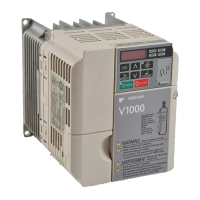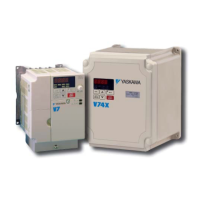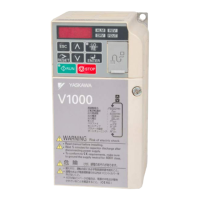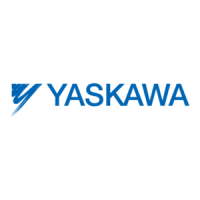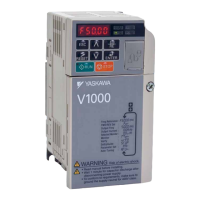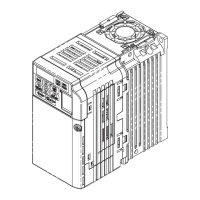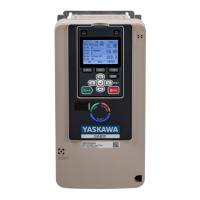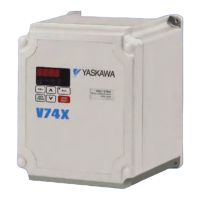No. Name Description Range Def.
Control Mode
V/f OLV
T1-11 Motor Iron Loss
Provides iron loss for determining Energy Saving coefficient. When power is cycled, the value set to E2-10
will appear (the motor iron loss). If T1-02 is changed, an initial value for the motor capacity will appear that
is close to the capacity that was changed.
0 to 65535 14W A −
<1> Normally not displayed.
<2> Voltage and frequency settings for vector motors and drive motors are often lower than for standard motors. Be sure to enter Auto-Tuning data according to the motor nameplate and motor
data sheets. If the no-load voltage and frequency values are shown, enter those values into T1-03 and T1-05.
n
Precision Settings for Auto-Tuning
Basic motor nameplate data can be used to auto-tune a motor. However, improved performance can be achieved by using precise data for base voltage
and base frequency. If the base no-load voltage and frequency are known, enter this data when executing auto-tuning to improve performance.
Parameter Normal Settings Precision Tuning
T1-03 Enter the motor rated voltage Enter the no-load voltage when the motor is operating at its rated revolutions per minute
T1-05 Enter the motor base frequency Enter the no-load frequency when the motor is operating at its rated revolutions per minute
u
No-Load Operation
This section explains how to operate the drive with the motor uncoupled from the load during a test run.
n
Before Starting the Motor
Check the following items before operation:
• Ensure the area around the motor is safe.
• Set the proper motor rated current to T1-04 to prevent overheating or other damage from motor overload.
• Ensure external emergency stop circuitry is working properly and other safety precautions have been taken.
n
During Operation
Check the following items during operation:
• The motor should rotate smoothly (i.e., no abnormal noise or oscillation).
• The motor should accelerate and decelerate smoothly.
n
Operation Instructions
The following example illustrates a procedure to run the drive using the digital operator.
Note: Before starting the motor, set the frequency reference to 6 Hz.
Refer to The Drive and Programming Modes on page 61 for instructions.
Step Display/Result
1. Turn on the power to the drive. The initial display appears.
2.
Press the key to select LOCAL. The LO/RE LED will turn on.
3.
Press
RUN
to give the drive a run command. RUN will light and the motor will rotate at 6 Hz.
Off On
4. Ensure the motor is rotating in the correct direction and no faults or alarms occur.
Motor
Forward
5.
If there is no error in step 4, press to increase the frequency reference. Increase the frequency in 10 Hz
increments verifying smooth operation results at all speeds. For each frequency monitor the drive output current
(U1-03) through the LED operator to confirm the current is well below the motor rated current. Example: 6 Hz →
50 Hz/60 Hz.
Note: Refer to Auto-Tuning Errors on page 228 for help with errors that occur while Auto-Tuning the drive.
4.7 Test Run
YASKAWA ELECTRIC SIEP C710606 18A YASKAWA AC Drive – V1000 Technical Manual (Preliminary)
95
4
Start-Up Programming
& Operation

